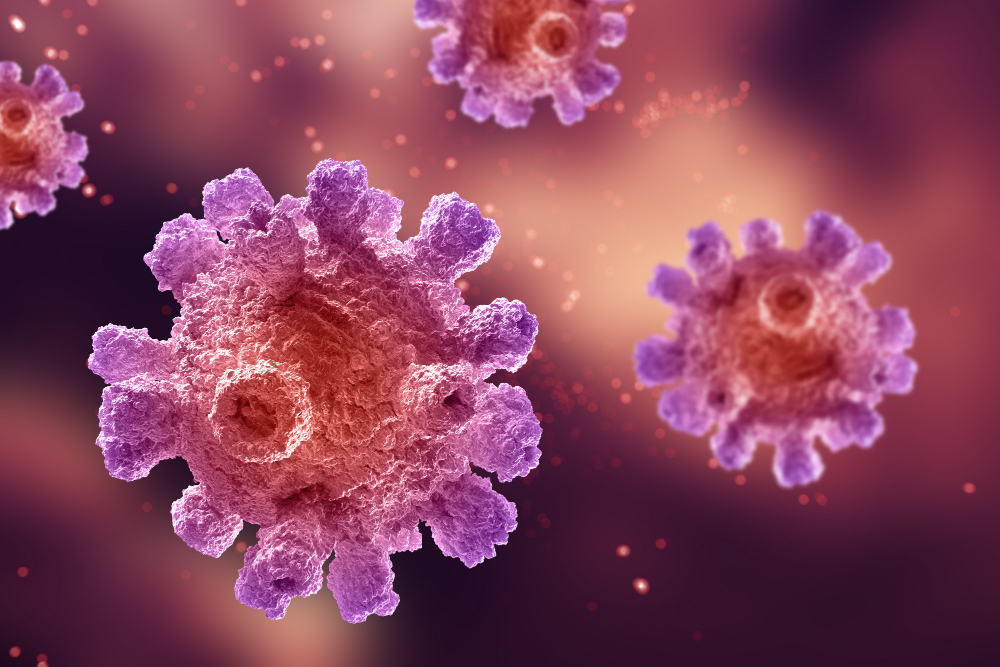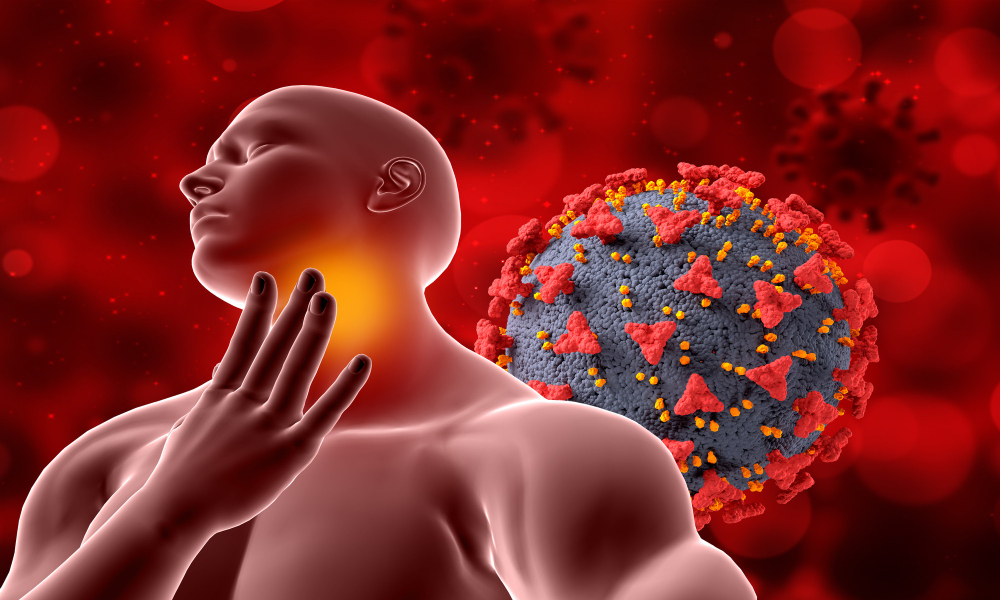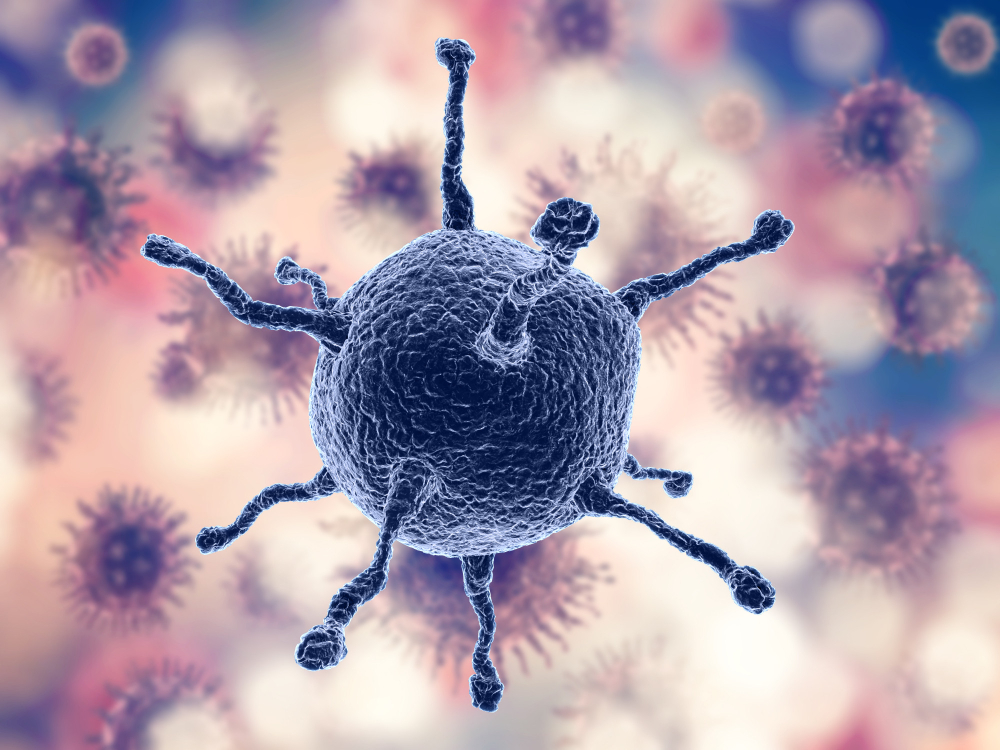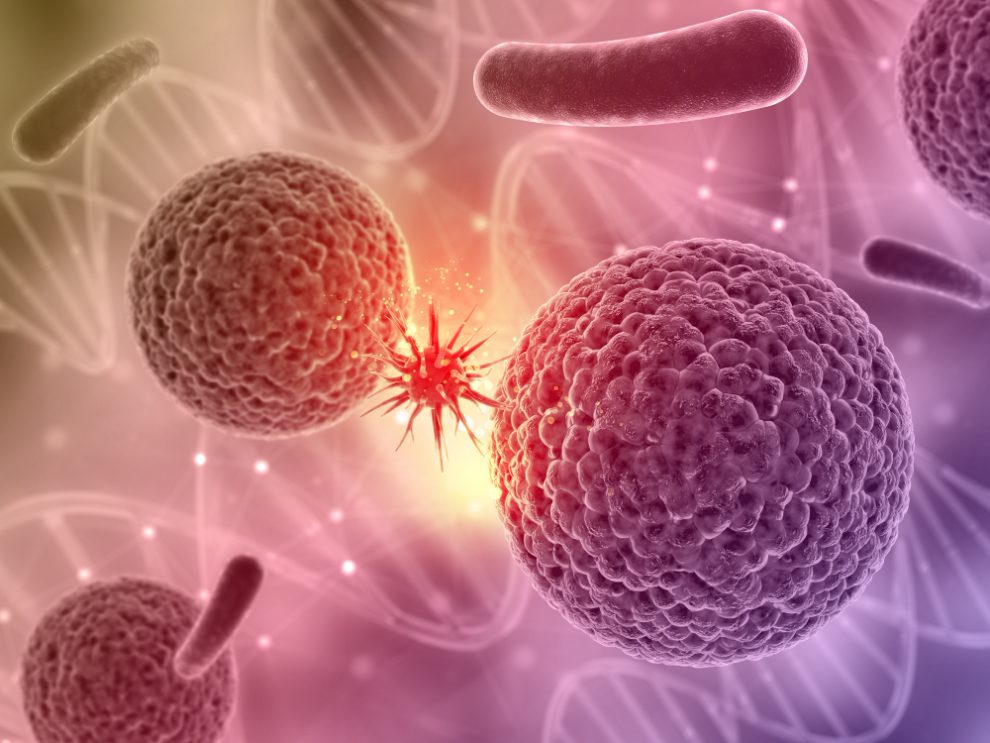Neuroendocrine cancer, sometimes called neuroendocrine tumors (NETs), arises in cells that are part of the neuroendocrine system. However, it is in charge of creating hormones that control numerous bodily activities. These tumors can develop everywhere in the human body, but the lungs, pancreas, and digestive system are where they are most frequently detected.
This article will discuss what neuroendocrine cancer is and how neuroendocrine cells work. The symptoms, early and later, and the diagnosis of neuroendocrine cancer. We will also discuss its treatment and whether it’s curable.
What is Neuroendocrine Cancer?
A relatively rare kind of cancer called neuroendocrine cancer additionally referred to as simply neuroendocrine tumors (NETs). Nonetheless, it arises in the neuroendocrine cells, which can be found in the gastrointestinal system, pancreas, lungs, and other organs. However, these cells create hormones that control several biological processes, including metabolism, blood pressure, and digestion.
In addition, NETs can generate hormones, develop slowly or quickly, and have various symptoms, including weight loss, diarrhea, asthma, and flushing. Some NETs, however, could not even cause any symptoms.
How do Neuroendocrine Cells work?
Like traffic officers, neuroendocrine cells direct traffic at crowded junctions by signaling when to stop and go. Furthermore, endocrine cells watch for nervous system impulses much like them. These neuroendocrine cells inform the endocrine system that they should discharge hormones when they receive the signal. Furthermore, hormones coordinate various bodily processes and tell your body when and what to perform.
These neuroendocrine cells do a lot more than only monitor signals and initiate the release of hormones. Additionally, they generate and discharge hormones that regulate their activity within the organ they are found in.
As an illustration, the neuroendocrine cells that make up your digestive system, or gut, produce hormones. In contrast, it stimulates the formation of digestive juices and also regulates the muscles that transport food through your intestines.
Endocrine cells can develop into neuroendocrine cancer when they divide and expand uncontrolled. However, these tumors can harm the organs wherein the cells are situated.
What are the Different Types of Neuroendocrine Tumors?
Neuroendocrine tumors (NETs) come in various forms and are categorized according to their location, and cell type, including hormone production. Among the NETs with the highest prevalence are:
Gastrointestinal NETs
Tumors form in the lining of the stomach, the small intestine, the colon, and especially the rectum of the digestive tract.
Pancreatic NETs
These kinds of tumors form in the pancreas, which serves as an organ that creates hormones that control blood sugar levels and digestive enzymes to aid in digesting.
Lung NET
Small-cell lung carcinoma (SCLC) and non-small cell lung cancer, or NSCLC, are two different types of lung tumors that grow in the lungs.
Carcinoid tumors
This kind of NET can develop in the respiratory system, gastrointestinal tract, and as well as, various other organs, among other places in the body.
Medullary thyroid carcinoma
The distinctive form of NET can create hormones that control metabolism since it grows in the thyroid gland.
Pheochromocytoma
A rare kind of NET that may create hormones that control blood pressure. Furthermore, it is found near the adrenal glands, which are found in front of the kidneys, which is another example.
Note:
The kind, location, and effective stage of the malignant tumor, in addition to the patient’s
However, general health and other circumstances influence how NETs are treated and managed.
Who is affected by these tumors?
Everyone can develop neuroendocrine tumors (NETs), although they are uncommon and comprise a small portion of all malignancies. Over the past several decades, NETs have become more common. Furthermore, it is estimated that 12,000 new cases are detected annually in the United States.
Although NETs can develop at any age, those over 50 are the most frequently diagnosed with them. In addition, medullary thyroid cancer and pheochromocytoma are two examples of NETs that may have a genetic component and run in families.
A family pedigree of the condition, genetic abnormalities, and exposure to specific poisons and chemicals are all risk factors for acquiring NETs. However, the origin of NETs is frequently being determined. Furthermore, the lungs, pancreas, GI tract, and other organs are only a few of the body’s tissues and organs that NETs can influence. Other than that, the position, size, associated stage in which the tumor, and the existence of hormone production, along with additional variables, all affect the symptoms and treatment choices.

When to see a Doctor?
A medical professional should address any persistent or inexplicable symptoms that might be brought on by neuroendocrine tumors (NETs).
These may consist of the following:
- Abdominal discomfort, bloating, or cramping
- Constipation or diarrhea
- Unjustified weight gain or loss
- A skin-flushing action
- Breathing difficulties or wheezing
- Continual coughing or chest discomfort
- Frailty or weariness
- Alterations in urinary or bowel patterns
- Jaundice (skin and eye yellowing)
- Unexpected bleeding or discharge
Note:
NETs or other cancers run in your family? If yes, discuss your risk with your doctor and consider genetic tests and counseling.
However, it’s crucial to remember that other disorders might bring on many of these signs and aren’t always signs of NETs. Furthermore, if your symptoms are severe or persistent, your doctor could advise additional testing or a referral to another specialist for diagnosis and treatment.
What are the early Symptoms of Neuroendocrine Cancer?
The tumor’s location, size, and production of hormones all affect the early signs and symptoms underlying neuroendocrine cancer (NETs). Since NETs frequently don’t exhibit any obvious signs initially, identifying them might be challenging.
Similarly, when symptoms manifest, they could be ambiguous or non-specific, complicating diagnosis.
Early signs of NETs might involve the following:
- Discomfort or pain in the abdomen
- Alterations in bowel habits, including constipation or diarrhea
- Unjustified weight gain or loss
- Frailty or weariness
- Redness or flushing of the skin, particularly on the face, upper neck
- Alteration in appetite or digestion, especially at nighttime perspiration
- Unknown chills or fever
- Persistent coughing or wheezing Swelling in the lower extremities or other parts of the body
- Visual changes or additional sensations or symptoms
Note:
It is crucial to remember that these symptoms do not always indicate the existence of NETs and might be brought on by various other illnesses. However, you should visit a doctor for an assessment and additional tests if you have persistent or alarming symptoms. Similarly, early NET detection and management can enhance results and quality of life.
What are the later Symptoms of Neuroendocrine Cancer?
Neuroendocrine cancer (NET) ‘s subsequent symptoms might vary depending on the tumor’s location, size, stage, and if the cancer has metastasized (spread to other areas of the body). Therefore, as NETs progress, they may produce more specialized symptoms that aid diagnosis.
Following NETs, some symptoms might include:
- Abdominal discomfort or swelling
- Jaundice (skin and eye yellowing)
- Diarrhea or constipation out of control
- Blockage in the intestines
- Stool with blood in it
- Coughing up sputum or blood
- Persistent wheezing or coughing
- Respiratory issues or lack of breath
- Fractures or bone discomfort
- Limb numbness, tingling, or weakness
- Visual changes or additional sensations or symptoms
Carcinoid syndrome is a symptom that occasionally accompanies NETs, including flushing, diarrhea, asthma, and heart palpitations. Furthermore, this happens when the tumor releases certain hormones that interfere with the body’s normal processes.
Note:
It is crucial to remember that these symptoms do not always indicate the existence of NETs and might be brought on by various other illnesses. However, you should visit a doctor for an assessment and additional tests if you have persistent or alarming symptoms. Early NET detection and management can enhance results and quality of life.
What is Carcinoid Syndrome?
Neuroendocrine cancer (NET) generates specific hormones and chemicals, including serotonin and additional vasoactive substances. As a result, it can cause a combination of symptoms known as carcinoid syndrome. However, these compounds can impact the body’s normal processes and cause various symptoms.
Carcinoid syndrome symptoms can include:
- Redness or flushing of the skin, particularly on the face, upper neck
- constipation or diarrhea
- cramping or discomfort in the abdomen
- Breathing difficulties or wheezing
- irregular pulse or palpitations in the heart
- frailty or weariness
- nausea or diarrhea
- changes in weight or appetite
- unknown chills or fever
The most typical NETs with carcinoid syndrome start in the lungs or the digestive system. But not all NETs release the hormones resulting in carcinoid syndrome, whereas not all patients have similar signs and symptoms.

In addition to Surgery or other tumor removal or management methods, the treatment of the condition may also involve drugs that specifically target the chemicals and hormones generated by the tumor.
However, carcinoid syndrome sufferers must manage their symptoms and monitor the tumor’s development and activity.
What are the Causes of Neuroendocrine Cancer?
It is unknown what specifically causes neuroendocrine cancer. These malignancies start in neuroendocrine cells, which resemble neurons and hormone-producing cells in their characteristics. As a result, your body is full of neuroendocrine cells. When neuroendocrine cells experience DNA alterations (mutations), neuroendocrine tumors form. However, the instructions that inform a cell what to do are encoded in its DNA. Ultimately, the adjustments instruct the neurons in the endocrine system to proliferate quickly and develop into a tumor.
Furthermore, some neuroendocrine tumors develop at an incredibly slow rate. Others are aggressive malignancies that spread (metastasize) to different body areas or infiltrate and destroy healthy bodily tissue.
How common is Neuroendocrine Cancer?
Although neuroendocrine cancer (NETs) is a relatively uncommon kind of cancer. In contrast, during the past several decades, its prevalence has been rising, partly because of advancements in detection and diagnosis. Furthermore, the National Cancer Institute estimates that every year in the United States, 12,000 persons are diagnosed with NETs.
Although, the occurrence of NETs varies based on where they are found in the body’s various organs and tissues. The gastrointestinal tract, lungs, and pancreas are some of the most typical locations for NETs. However, NETs comprise just over one percent of all malignancies, although their prevalence is rising. Furthermore, this is partially attributable to better imaging and diagnostic techniques that enable earlier detection and diagnosis.
Even though NETs represent a very uncommon kind of cancer, however, if they are not identified and treated at an early stage. Ultimately, they can significantly affect the patient’s well-being and standard of life. Lastly, ongoing research is aimed toward better NET management, and comprehension is essential to enhance patient outcomes.
The Diagnosis of Neuroendocrine Cancer
Several tests and methods are used to determine whether there are any kinds of tumors and their extent and activity when diagnosing neuroendocrine carcinoma (NETs). Furthermore, the diagnostic technique may vary depending on the suspected tumor’s location. However, a few frequent examinations and treatments include:
The doctor will inquire about any symptoms and risk factors and do a physical examination to look for any indications of malignancy.
Blood Test:
Tests on the blood and urine can help detect aberrant hormone levels or other signs that could point to the existence of a NET.
Imaging Studies:
Imaging studies can aid in identifying the tumor and determining its size and location. Examples include computerized tomography (CT), electromagnetic resonance imaging (MRI), PET, or positron emission tomography, scans.
Biopsy:
During a biopsy, a tiny tissue sample taken from the suspicious tumor is removed and put under a microscope for analysis. As well as identifying the kind as well as the grade of the brain tumor can assist in confirming the diagnosis.
Endoscopy:
Endoscopy uses a small, flexible tube containing a camera to observe the interior of an organ or tissue, such as the digestive tract. This can assist in locating and biopsying any suspect spots.
Genetic Testing
Because certain NETs are linked to inherited genetic alterations, people who possess relatives with histories of these tumors. Ultimately with certain additional risks may be advised to undergo genetic testing.
Does neuroendocrine cancer come in different grades?
Depending on the cancerous cells’ characteristics and their development pace, neuroendocrine tumors (NETs) may be divided into several categories. Perhaps. The aggressiveness and propensity of a NET to metastasize are both influenced by its grade.
The World Health Organization, or WHO, grading system essentially divides NETs into three categories is the one that is most frequently used.
Stage 1:
A (well-differentiated) tumor is slow-growing and contains cells that resemble normal cells when seen under a microscope. However, compared to higher-grade tumors, they are typically thought to be less aggressive and have a better prognosis.
Stage 2:
The (moderately distinct) tumors are more likely to develop and spread to other body areas. Because they have cells that appear more aberrant, however, depending on the location, size, and other aspects of the tumor, they may have a more unpredictable prognosis.
Stage 3:
Grade three (poorly differentiated): These tumors contain highly abnormal-looking cells proliferating and developing quickly. Furthermore, they have a worse prognosis than lower-grade tumors and are typically thought to be the most aggressive.
How do NETs grades work?
The properties of the NETs tumor cells, which influence the tumor’s aggression and propensity for metastasis, are used to grade neuroendocrine tumors (NETs). However, the World Health Organization’s (WHO) grading method is commonly used to categorize NETs. Ultimately, which are divided into three categories depending on the mitotic rate (the pace during which the malignant cells divide).
In addition, the degree of morphological heterogeneity (how identical the tumor cells seem to normal cells). Furthermore, together the mitotic count as well as Ki-67. Therefore, indicators of how quickly the tumor cells multiply and develop are used to assign grades. Furthermore, under a microscope, a physician counts the quantity of dividing cells visible in a given area (2 mm2) to ascertain the mitotic count. The doctor also measures the Ki-67 index.
Treatment of Neuroendocrine Cancer?
The kind and stage of the disease, the patient’s general health, and the possible advantages and disadvantages of various therapy. Therefore, approaches are some variables that affect how neuroendocrine cancer (NETs) is treated.
Any combination of the following methods may be used in the treatment:
Surgery
For localized NETs, Surgery is frequently the first line of therapy. However, Surgery aims to eliminate the tumor with adjacent lymph nodes or other damaged tissue.
Radiation therapy
High-energy beams are used in radiation treatment to eliminate cancer cells. However, it might be utilized to treat NETs that can’t be operated on or to ease symptoms brought on by the tumor.
Chemotherapy
Drugs are used in chemotherapy to destroy cancer cells. However, advanced NETs or people who have spread into additional body areas may benefit.
Targeted Therapy
Drugs specifically targeting chemicals or processes involved in developing and disseminating cancer cells are used in targeted treatment. However, these medications may be used for NETs with certain genetic alterations or receptor overexpression.
Peptide receptor radionuclide therapy (PRRT)
Targeted therapies like PRRT employ a radioactive material and a chemical targeting tumor cells. So far, radiation is delivered specifically to the tumor cells via the radioactive material, causing the least harm to normal cells.
Hormonal Therapy
Hormone treatment is employed to counteract the effects of the hormones that NETs release. However, it might be used for NETs like carcinoid tumors, which generate hormones.
Clinical trials
It involves research projects that examine potential NET therapies. Furthermore, patients could consider participating in clinical trials if they are qualified.
Important Factor
A multidisciplinary team of doctors, including medical oncologists, medical oncologists, radiotherapy oncologists, and interventional radiologists. Ultimately, it may be needed to make the therapy decision and sequence.
Is it curable?
It is frequently possible to treat localized neuroendocrine cancer that has not migrated to the body’s lymph nodes or other organs. However, tiny superficial gastrointestinal tumors can occasionally be eliminated endoscopically (via a non-surgical treatment carried out by a gastroenterologist). Furthermore, the cure, in most instances, requires surgical excision. When diagnosed, many neuroendocrine tumors had already spread or had returned following treatment. Although most metastatic tumors (tumors that have spread) cannot be cured, they can be treated with various therapies. Furthermore, the prognosis is based on several variables, such as the tumor’s microscopic appearance (differentiation and grade), its location of origin, the severity of the disease, and as well as how well it responds to therapy.
FAQs
What is the survival rate of Neuroendocrine cancer?
The relative survival rate after five years is 96% if the tumor has migrated to surrounding tissue or local lymph nodes. Furthermore, the close rate of 5-year survival is 68% if the malignancy has migrated to distant parts of the body.
How serious is Neuroendocrine cancer?
Neuroendocrine cancer is generally slow-growing when compared to more prevalent malignant tumors. Ultimately, they can create amino acids that have serious side effects. However, to minimize the severity of signs or to avoid potential liver damage. However, aggressive treatment is advised.
What is the best treatment for Neuroendocrine cancer?
Surgery. The primary form of therapy for neuroendocrine tumors (NETs) is Surgery.
What age range is Neuroendocrine cancer?
A pancreatic NET is often diagnosed around age 60. However, when a hereditary condition causes these kinds of tumors
Is Neuroendocrine Tumor always cancer?
Tumors (abnormal growths) called NETs form in the neuroendocrine system’s cells. NETs can either be benign or malignant, and they can either develop slowly or quickly. Although, depending on the particular cells involved, there are many forms of NET.
Can you live a long life with Neuroendocrine cancer?
It depends on your condition, neuroendocrine tumor (NET) type, treatment, and fitness level. However, no one can tell you exactly how long you will live.
Click Here: If you also want to learn about Tonsil Cancer.

Conclusion
Neuroendocrine cancer (NETs) is a rare type of cancer that arises in cells that are part of the neuroendocrine system. Furthermore, It has a variety of symptoms, such as weight loss, diarrhea, asthma, and flushing. Signs of Neuroendocrine cancer include a family pedigree, genetic abnormalities, and exposure to poisons and chemicals. Furthermore, early symptoms include discomfort or pain in the abdomen and alterations in bowel habits. Also, as well as unjustified weight gain or loss, frailty or weariness, redness or flushing of the skin, the tension in the upper neck, disturbance in appetite or digestion, and perspiration.
Moreover, the unknown chills or fever, persistent coughing or wheezing, swelling in the lower extremities, visual changes, or additional sensations or symptoms. It is important to visit a doctor for an assessment and further tests if you have persistent or alarming signs. Several options for treatment were also available to tackle this disease, e.g., Surgery, radiotherapy, etc. Furthermore, several methods have been used for a cure, including biopsy, blood tests, genetic testing, etc. Perhaps, the survival rate for this cancer is relatively low. However, the range is up to 5 years with 68%. Visiting the doctor is essential when symptoms show, do not predict yourself or cure by own self.

